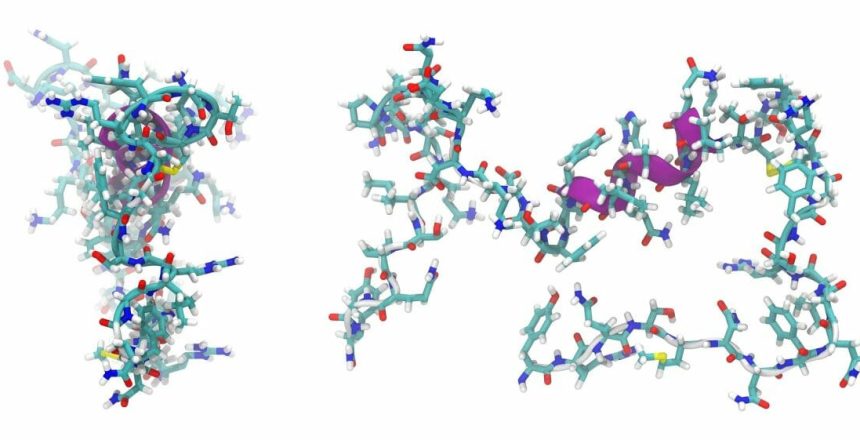Peptides-What are they?
In humans, peptides are a kind of naturally occurring short-chain amino acid. Proteins are made up of amino acids, and some amino acids have evolved to control how our bodies work.
As a therapeutic modality, peptides may be employed to rewrite preexisting sequences to modulate and revitalize activities. To put it more simply, they attach to specific targets and relay instructions to other cells, simulating or taking the place of the natural peptide’s actions. The possible power of peptides is to rewrite body chemistry in favor of homeostasis, restoration, and anabolism.
CJC-1295
Thirty amino acids comprise the synthetic GHRH (growth hormone releasing hormone) analog CJC-1295. Positive effects on growth hormone (GH) and insulin-like growth factor (IGF-1) production were seen, and the organism preserved the pulsatile pattern of GH secretion.
The hypothalamus is responsible for the production and secretion of GHRH. When released, it causes the pituitary gland to secrete GH in a pulsatile pattern. The half-life of GHRH is just a few minutes. As a result, the material will evaporate within a short period.
Specifically, the active part of GHRH is the first 29 amino acids. The synthetic peptide Sermorelin may be used for this purpose. Additional modifications to Sermorelin may extend its half-life to 30 minutes. We refer to it as “CJC 1295.” CJC-1295 may be altered even more by combining it with DAC (Drug Affinity Complex). When bound to albumin, DAC’s half-life is extended to 8 days.
CJC 1295 may also be compounded without DAC, which results in a GH surge that is more physiologically accurate. A longer half-life from DAC binding to albumin implies less frequent dosing is required.
Ipamorelin
Peptide Ipamorelin has been studied for its possible role in enhancing endogenous growth hormone synthesis. It consists of five amino acids that may increase growth hormone production in the pituitary gland. A reduction in body fat, an increase in lean muscle mass, better sleep, and an uptick in collagen formation are just some of the advantages that have been suggested.
The gut hormone ghrelin influences eating, fat storage, and growth hormone production, and Ipamorelin mimics its effects. The pituitary gland releases the hormone growth hormone (GH) in response to its binding to the ghrelin receptor in the brain.
Weight Gain and Ipamorelin
Weight growth and obesity were studied in rats and mice for 9 weeks with Ipamorelin. Mice with and without GH receptors on their cells were used for the experiment, and Ipamorelin treatment for GH-deficient mice resulted in a 15.3% rise in body weight after 9 weeks.
Possible Effects of Ipamorelin on Bone Health
According to recent research, researchers may have boosted the bone mineral content in adult female rats by combining Ipamorelin and GH-releasing peptide-6. Bone mineral content was enhanced in the entire skeleton, the tibia, and the spine when Ipamorelin and GHRP-6 were compared to a placebo in vivo. All of the substances also boosted bone mineral density in the tibia. Despite the need for further study to determine its usefulness, this may have far-reaching consequences for managing bone diseases like osteoporosis.
GHRP-2
Ghrelin, a recently discovered gastrointestinal peptide, attaches to the growth hormone (GH) secretagogue receptor, and its synthetic agonist, GHRP-2, stimulates the production of GH. Both GH secretion and appetite/meal start are stimulated by ghrelin.
Animal studies have revealed that GHRP-2 affects food intake, leading to much research into its potential as a growth hormone secretagogue.
Possible Anti-Aging Effects of Growth Hormone Releasing Peptide 2
There is a lack of study on the advantages of GHRP-2 in adults; nonetheless, it has been observed that GHRP-2 injection raises hGH levels in the bloodstream.
As a result of these observations, GHRP-2 has been touted as a possible anti-aging medication that may help revive the body’s natural hGH production.
You can find CJC-1295 & Ipamorelin & GHRP-2 Blend at Biotech Peptides if you are a researcher studying the synergistic effects of these peptides combined. Visit this website for the best compounds stack.
